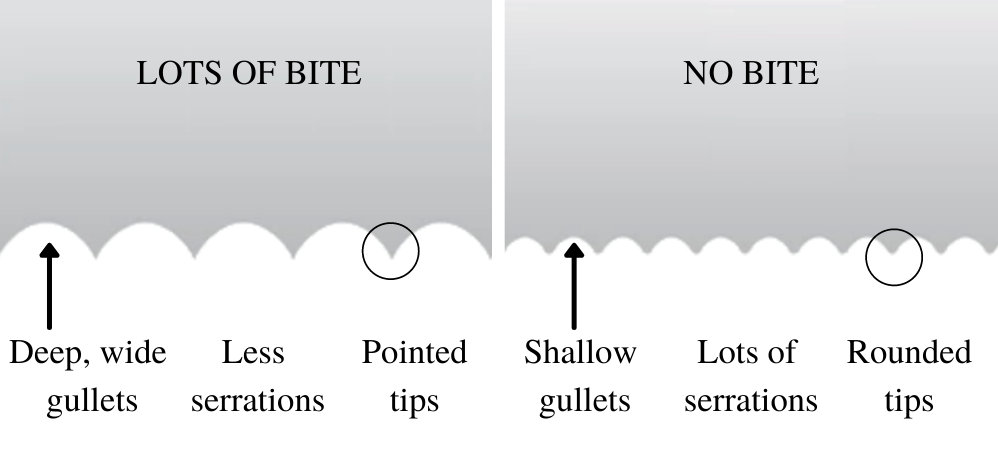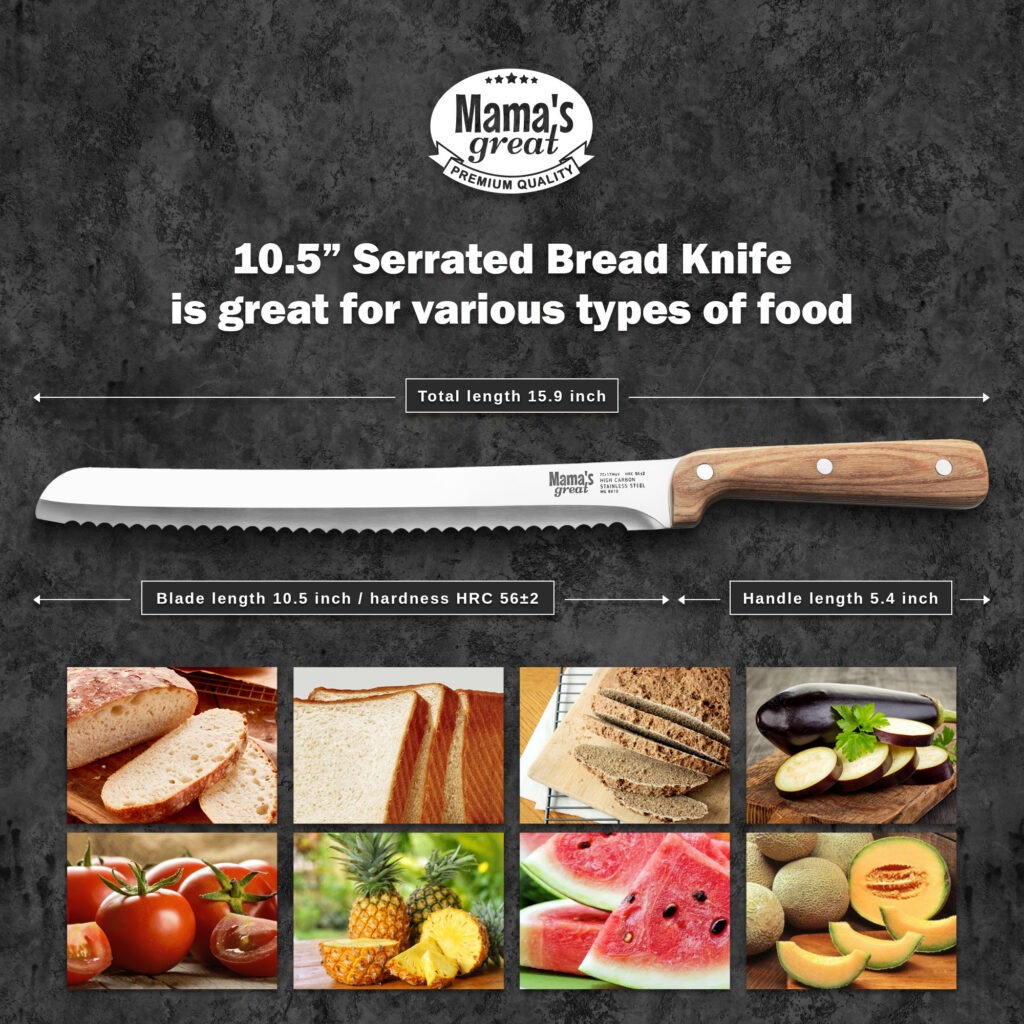
A bread knife is the second most used knife in the kitchen next to a chef’s knife. Not only is it for cutting bread & pastries but it will also come in handy when slicing skinned fruits, splitting cake layers, or cutting stacked sandwiches.
The choice of bread knives available can be overwhelming for picking the right knife. Unfortunately, not all knives are created equal. How to find a good bread knife, what details to pay attention to, and what differentiates a good knife from a bad knife? Read further for the rules of thumb when choosing a new bread knife.
What is the working principle of a bread knife?
When cutting with a regular knife we are using the sharp edge of the blade and cut using downward pressure. Bread knifes blade is serrated and acts like a saw. To cut you need to move the knife back and forth. As the downward pressure is weaker compared to regular knives it enables to cut soft fruits and delicate foods without squishing them. With a good bread knife, you can cut through crusty veneer and soft interior without producing too many crumbs and destroying their shape.
What to look for when choosing your new bread knife?
1. Lenght of the blade – prefer a longer blade! Usually, the bread knives blades have a length of 8 to 10 inches. Though the widest choice is among 8-inch blades, a 10 inch or longer blade is preferable. Longer blades have a few advantages over shorter blades: with a longer blade, you will get a smoother cut as less back and forth movement is needed. You can use longer blades with wooden bread slicers or bread slicing guides. Shorter blades tend to come out of cutting guides, and the slices become uneven. Also, a longer blade makes it easier to cut large fruits like watermelons or when slicing cake layers.
2. Shape of the blade – prefer slightly bowed blade! A sourdough bread bottom usually has a thicker crust and needs additional effort to cut through. Here the shape of the blade is essential. With a straight blade, pressure is applied on the crust evenly along the length of the blade. It means you need to use a lot of force. Whereas bowed blade applies pressure on the crust ascendingly, and you need less force to cut through the thick crust. For the bread knife to perform well it does not need to be heavily curved. A slight bow towards the tip of the blade is enough for the knife to perform well.

3. Serration – prefer serration with sharp teeth and larger gullet (the hollow between tips of the teeth). Sharp, pointy teeth require less pressure when cutting the hard crust compared to rounded teeth. For the smooth cut opt for a blade with fewer teeth. The fewer they are, the greater the size of the gullet between the teeth. Remember, the gullet is what reduces friction between the knife and the food. So the larger the gullet, the less friction, and the smoother the cut and fewer crumbs.

4. Blade thickness – prefer thinner blade! The thinner the blade the more precise the cut and the thinner slices you can cut. With a thick blade, the cutting edge has a blunt angle. When cutting thin slices these blades start to break the slices instead of cutting. There are many knives on the market that look beautiful but are made of thick .08-.1 inch (2-2.5mm) steel. As this is standard size steel, it is cheap to manufacture these knives and there are a lot of thick bladed knives being offered. If possible prefer a .06 inch (1.5mm) blade, as it cuts better and is lighter to handle.
5. Knife edge type – Prefer a blade with a narrow-angle edge & double grind. We all know that a good knife is a sharp one. The sharpness and last touch to the knife is given by sharpening. Sharpening a knife is a science of its own. But there are two important concepts to understanding how the knife is sharpened: Grind & Bevel. Grind determines the blade’s cross-sectional shape while bevel determines the cutting edge. Commonly the bread knives have a chisel grind. It means the blade is sharpened on one side at a wide angle. On better knives, you can also find a double side taper grind or double side hollow grind, with the cutting edge having a chisel grind. The advantage of these blades is that the blade thickness is reduced smoothly towards the cutting edge. This ensures the knife can cut thin slices breaking them.

In summary, when you’re shopping for a bread knife. You’ll make a good choice if you buy a knife with a 10-12-inch-long, slightly bowed blade made of thin steel. Also, prefer serration with pointy teeth, large gullet, and a double grind blade.


